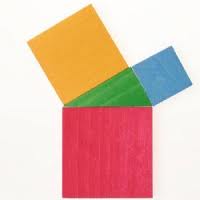“Pure mathematics is, in its way, the poetry of logical ideas”; said Albert Einstein. This simply means that mathematics isn’t as complicated as it seems. It is just a set of logic put together. It does not just make you smart and have various career opportunities but also teaches you a way of life. Mathematics is a universal part of human culture. Math shows you that you can reach a desirable result if you a follow a certain series of steps in a particular order, and complete each step without making an error. If you find an error in your process, you can start over, making sure to alter your methods at the moment you messed up the first time. Life doesn't allow you to redo anything most of the time, but when it comes to stuff you do over and over on a consistent basis, you're allowed to change things in between attempts. Every now and then we have heard children complaining about having trouble with one subject; and i.e. MATHEMATICS.
Theoretically, mathematics is nothing but the abstract study of topics such as quantity (numbers), structure, space and change. We have heard and read about various mathematicians and philosophers discussing about the exact definition of mathematics. It’s a subject which is too complicated to be described due to its diversity and vastness within itself. Math is a brain sharpening tool – a tool that not only builds the foundation for a great, but that also builds self-confidence. Being fast with numbers is of utmost importance for the kids today due to the cut-throat competition. You have to be smart, witty, confident, with presence of mind, sharp, etc. to make a mark in today’s world – to achieve your goals and be successful. Helping children to understand mathematics in a better way and in a practical way is the need of hour. An exhibition was conducted at and by the Goethe Institut - Max Mueller Bhavan, Kala Ghoda called as “Mathematics – That You Can Touch”. It aimed at creating a new approach towards mathematics. It helped in understanding mathematics with a new approach/attitude/outlook and an easier one. It focussed on all the age groups. They tackled math using the playful approach. It answers the frequently asked question; a question that we ask oneself – ‘why is this so?’ It involved grasping with hand, head and heart which can set a new impulse for the mathematics lessons in the school. They had in all 20 stations which displayed different aspects of math. A few of which are:
· Infinite Patterns – This helped kids understand how infinite images were formed if an object was placed in a square box with mirrors on all the four sides. Eg: Changing Rooms.
· Tower of HANOI – This game taught how to get a tower of 5 discs in the same ascending order by shifting of discs in 3 different tower slots. It could be calculated with the help of the formula (2n – 1); and the answer to this is 31 steps.
· Everything fits into the cube – This helped understand how 4 or more dimensional objects could be placed in a square shaped box. The objects used were a triangle, hexagon and a star. The trick to cracking this game was how many squares does each object have.
· Who reaches farthest? – A technique that architects use pretty often. How to balance 4 squares one above the other by reaching the farthest length. It’s just a matter of logic and how one places the square slabs without a dis-balance. Also helps in understanding the theory of centre of gravity.
· Soap Films – It helps explain the concept of surface tension. How the soap water forms a cube or a rectangle at the centre of the apparatus used.
· Tangram – A puzzle game that we all played as kids. Forming a square from all the pieces given that are of different shapes – triangle, square, and trapezium.
· The fastest way down – Which ball has more speed while going down from two curvy slopes and one steep slope; and which ball has more speed when they travel from different points on the two curvy slopes. The ball on the curvy slopes has more speed than the steep slope.
The most impressive thing about the exhibition for me was how these theorems and applications of math were explained in an interesting way which as a student I found extremely boring. I was keen to know what new technique I’d get to learn at the next station. I was as excited as the school kids who were present there to solve each and every math puzzle. It was an interactive session between the children and the volunteers at each station. There was no age bar and hence people who love mathematics or want to know and learn more about it enjoyed it thoroughly. It taught how to look at math with a playful approach and apply logic. Practical knowledge does not only help one understand a subject well but also helps build the basics very strong and makes it easier during application.
